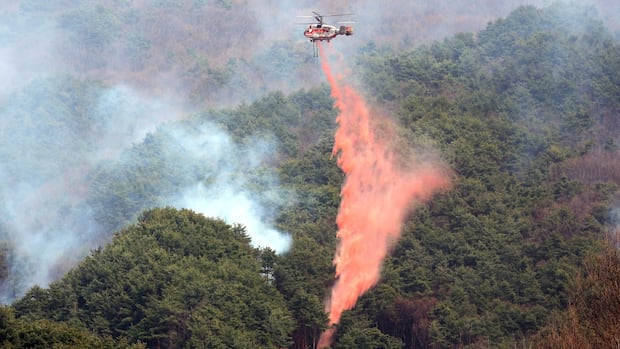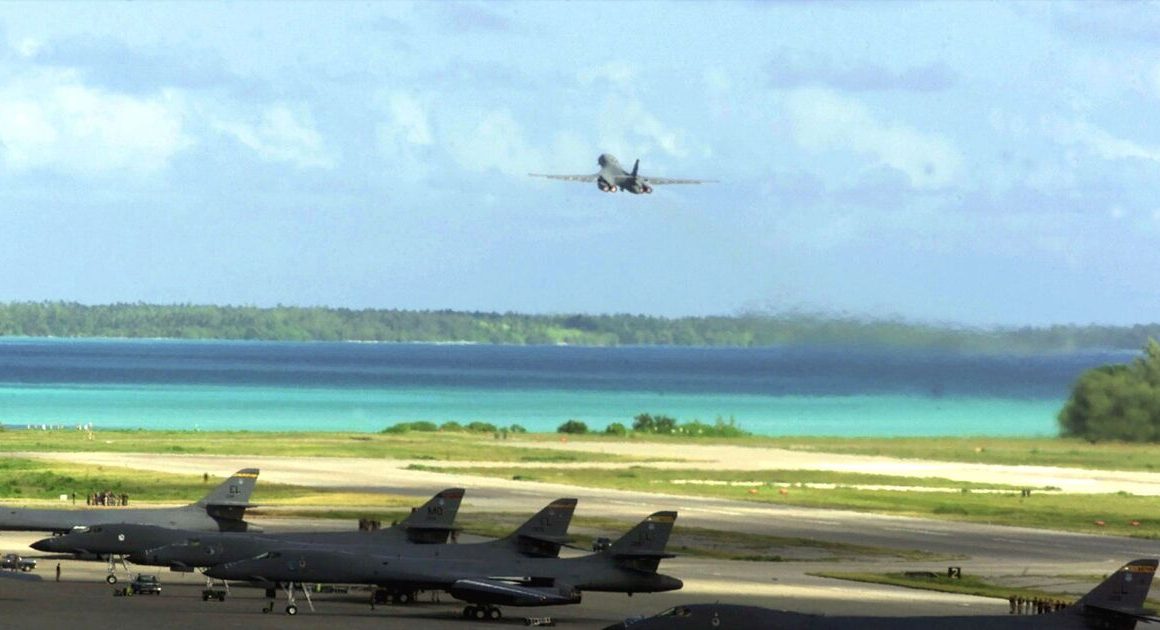The death toll in the wildfires raging across South Korea’s southeastern region rose to 24, and the pilot of a firefighting helicopter was killed when the aircraft crashed on Wednesday, as the country battles some of its worst forest fires in decades.
The deadly wildfires have spread rapidly and forced more than 27,000 residents to flee their homes, the government said. The blazes, fuelled by strong winds and dry weather, have razed entire neighbourhoods, closed schools and forced authorities to transfer hundreds of inmates from prisons.
“We are deploying all available personnel and equipment in response to the worst wildfires ever, but the situation is not good,” acting President Han Duck-soo said, adding that the U.S. military in Korea was also assisting.
The Korea Forest Service said 24 people had been confirmed dead in the fires. It did not give a breakdown, but earlier the Safety Ministry said 14 people had died in Uiseong county, and four other deaths were linked to a blaze in Sancheong county.
Dry conditions were expected to persist in the wildfire-hit region on Wednesday, the safety ministry said.

The Forest Service also said one of its firefighting helicopters crashed while trying to extinguish a blaze in the county of Uiseong, and the pilot was killed.
South Korea relies on helicopters to tackle forest fires because of its mountainous terrain, and the incident led to the brief grounding of the fleet.
Video footage from the scene showed what appeared to be a twisted fuselage alongside smoking debris scattered over a hillside. The cause of the accident was being investigated, authorities said.
Eight Russian helicopters out of the Korea Forest Service’s fleet of 48 used in firefighting had been taken out of operation since last year due to an inability to import parts from Russia because of sanctions related to the Ukraine war, Yoon Joon-byeong, a Democratic Party lawmaker said in October, using data from the forest service.
Kim Jong-gun, a spokesperson for the Korea Forest Service, said the agency planned to secure more wildfire-fighting helicopters, responding to criticism about a lack of equipment and helicopters on the ground.
He said that 4,919 firefighting personnel were being deployed on Wednesday, including hundreds of police officers and military units, while 87 helicopters were being used.
Ancient temple destroyed
The blazes that broke out on Saturday in Uiseong are yet to be contained, gutting ancient temples and destroying homes.
The Uiseong fires were also threatening several UNESCO World Heritage sites, Hahoe Village and the Byeongsan Confucian Academy, in Andong city on Wednesday, a city official said, as authorities sprayed fire retardants to try to protect them.
The flames had already burned down Goun Temple, an ancient temple built in 681, Yonhap reported.
The government has designated the affected areas as special disaster zones and said the fires had damaged more than 15,000 hectares.
The Uiseong fire, only 68 per cent contained and exacerbated by gusty winds, shows “unimaginable” scale and speed, said Lee Byung-doo, a forest disaster expert at the National Institute of Forest Science.
Climate change is projected to make wildfires more frequent globally, Lee said, citing the unusual timing of wildfires that ravaged part of Los Angeles in January and a recent wildfire in northeast Japan.












